Solar energy is a renewable and sustainable source of power that has gained increasing attention and popularity in recent years. One of the key components in converting sunlight into usable electricity is the solar panel. This essay aims to provide a comprehensive understanding of how solar panels work, exploring the principles, components, and processes involved in harnessing the power of the sun.
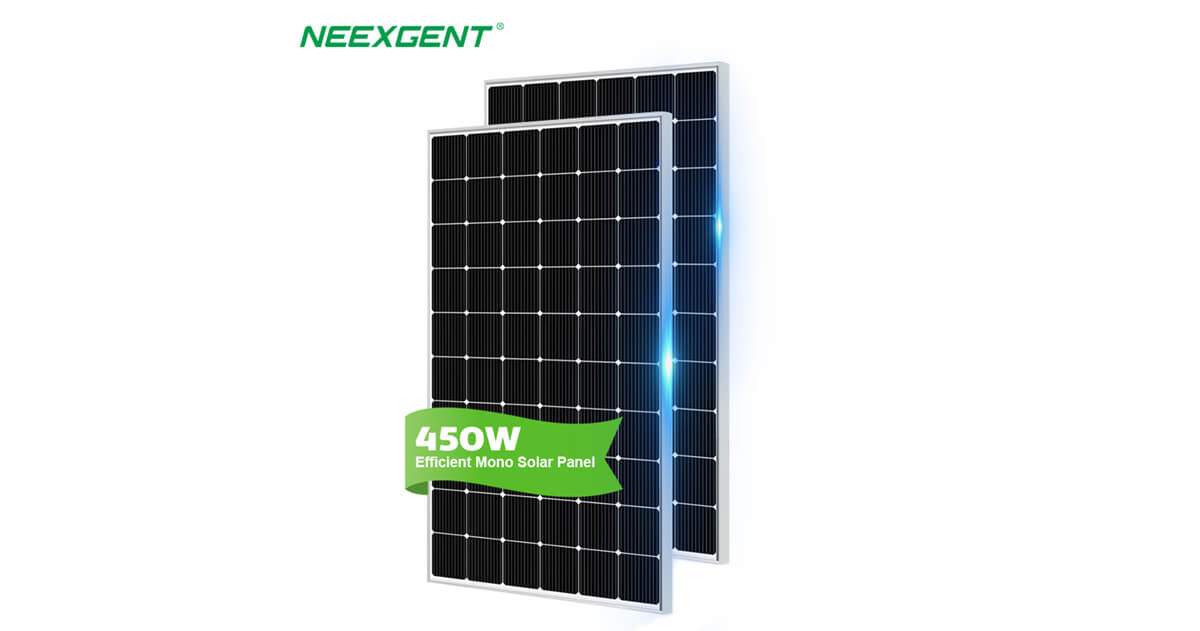
450W Monocrystalline Solar panel
1. The Basics of Solar Panels:
Solar panels, also known as photovoltaic (PV) panels, are devices that generate electricity directly from sunlight. They are composed of numerous interconnected solar cells, which are responsible for converting sunlight into electrical energy through the photovoltaic effect.
2. The Photovoltaic Effect:
At the heart of solar panel functionality lies the photovoltaic effect, discovered in the mid-19th century by French physicist Edmond Becquerel. The photovoltaic effect occurs when certain materials, known as semiconductors, absorb photons (light particles) from the sun, causing the electrons within the material to become energized and flow, generating an electric current.
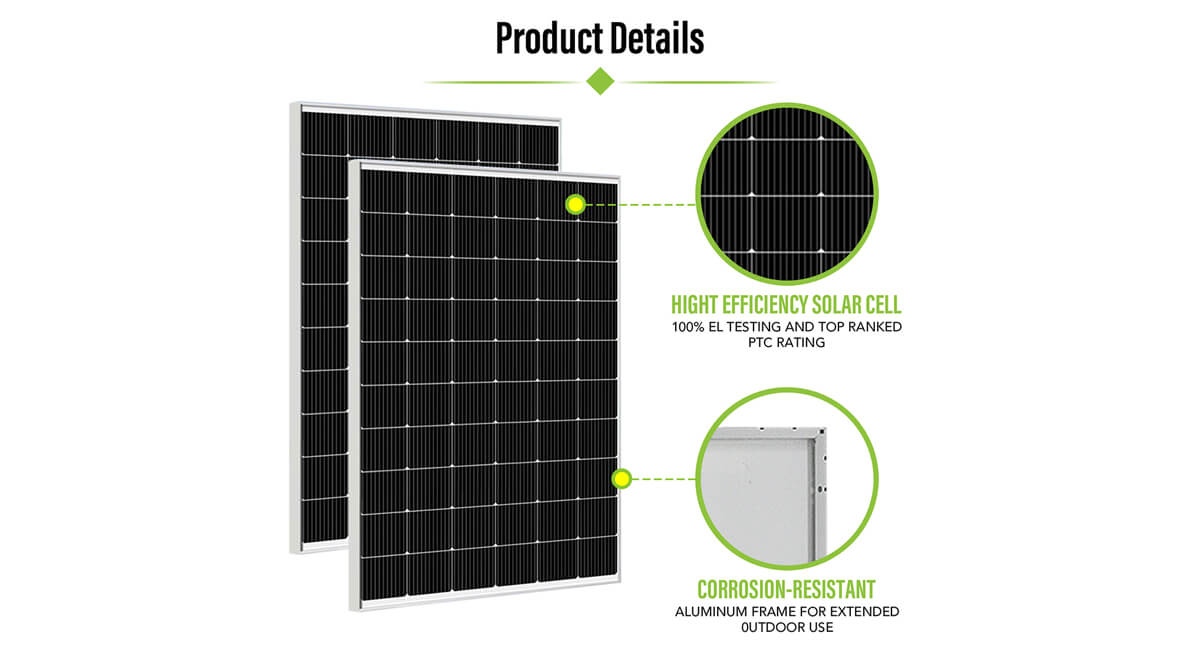
3. Solar Panel Components:
Solar panels consist of several essential components that work together to convert solar energy into electricity:
- Solar Cells: Solar cells are the fundamental units of a solar panel. Typically made of silicon, they contain layers of semiconductor materials that absorb sunlight and generate an electric current.
- Encapsulation: To protect the delicate solar cells from environmental factors, they are encapsulated between two layers of transparent material, such as glass or a specialized polymer, forming a durable, weather-resistant module.
- Wiring and Connectors: Electrical conductors and connectors are used to interconnect individual solar cells, allowing the flow of electricity between cells and into external circuits.
- Frame and Backsheet: A sturdy frame provides structural support and protection for the solar panel, while the backsheet prevents moisture from infiltrating the module.
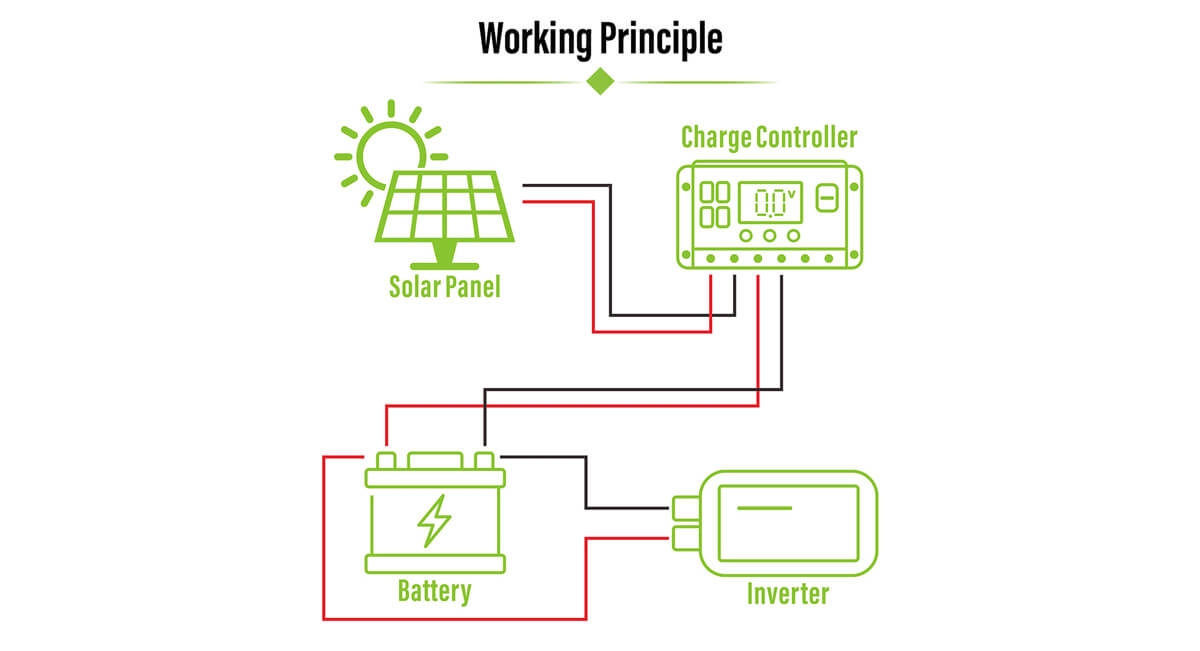
4. The Solar Panel Operation:
The operation of a solar panel involves a series of interconnected processes that enable the conversion of sunlight into usable electricity:
- Absorption of Sunlight: Solar panels are strategically positioned to capture maximum sunlight. When sunlight strikes the solar panel, it encounters the transparent cover, passing through it to reach the solar cells.
- Photon Absorption: The solar cells within the panel absorb the photons present in sunlight, transferring their energy to electrons within the semiconductor material.
- Electron Excitation: The energized electrons are released from their atomic orbits, creating a flow of charge carriers or an electric current.
- Electrical Current Collection: The flow of electrons is captured by metallic conductive contacts on the solar cells, which are connected by wires. This current is then directed out of the solar panel to an external load or storage system.
- Conversion and Usage: The generated direct current (DC) is often converted to alternating current (AC) using an inverter to match the requirements of the electrical grid or power appliances directly. The converted electricity can then power various devices or be fed into the grid for public consumption.
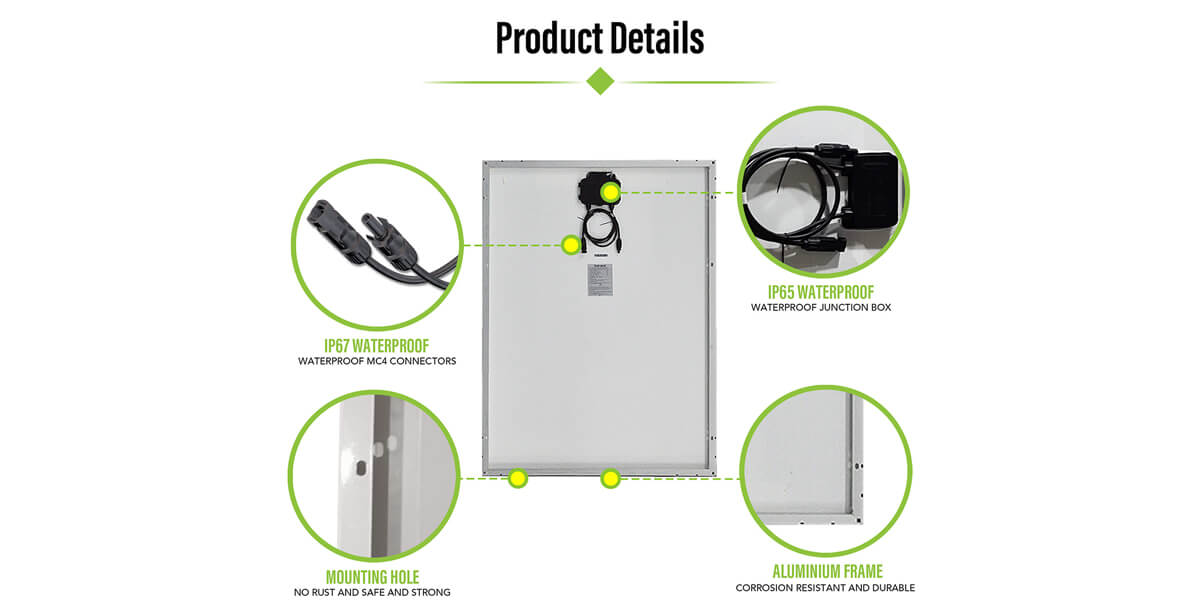
5. Factors Affecting Solar Panel Efficiency:
The efficiency of a solar panel refers to its ability to convert sunlight into usable electricity. Several factors influence the efficiency of solar panels:
- Sunlight Intensity: Higher sunlight intensity, such as on a sunny day, provides more photons for the solar cells to absorb, resulting in increased electricity generation.
- Temperature: Solar panels operate more efficiently at lower temperatures. As the temperature rises, the performance of solar cells tends to decrease, affecting overall panel efficiency.
- Shading and Obstructions: Shadows or obstructions, such as nearby buildings or trees, can reduce the amount of sunlight reaching the solar panel, impacting its output.
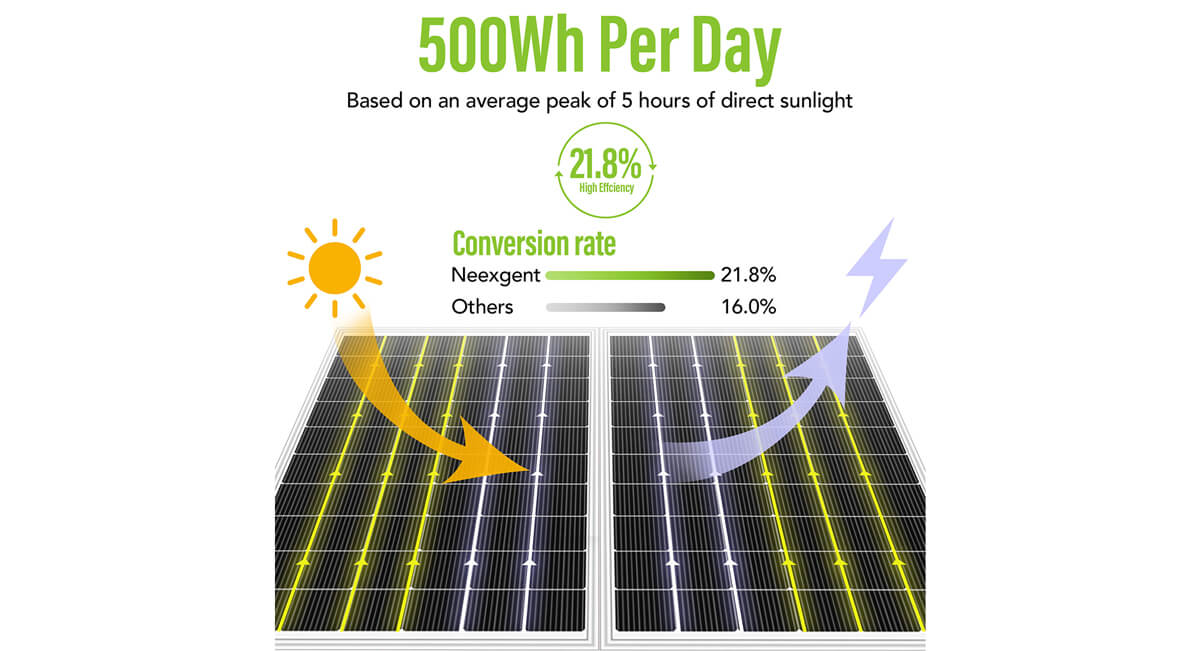
6. Types of Solar Panels:
There are various types of solar panels available, each with its unique characteristics and applications:
- Monocrystalline Solar Panels: Made from a single crystal structure, monocrystalline panels offer high efficiency and a sleek black appearance. They are ideal for installations where space is limited.
- Polycrystalline Solar Panels: Composed of multiple crystals, polycrystalline panels are less expensive to produce and have a lower efficiency compared to monocrystalline panels. However, they are a cost-effective option for larger installations.
- Thin-Film Solar Panels: Thin-film panels are lightweight and flexible, making them suitable for unconventional applications such as building-integrated photovoltaics (BIPV) or portable solar chargers. While they have lower efficiency, they perform better in low-light conditions.
- Bifacial Solar Panels: Bifacial panels can generate electricity from both sides by capturing sunlight from the front and reflecting light from the rear surface. This design increases their overall energy production.
7. Advancements in Solar Panel Technology:
Solar panel technology continues to evolve, driven by research and innovation. Some notable advancements include:
- Perovskite Solar Cells: Perovskite materials have shown great potential in achieving higher efficiency and lower production costs. Research is underway to improve the stability and scalability of perovskite solar cells.
- Tandem Solar Cells: Tandem or multijunction solar cells combine multiple layers of different semiconductors to capture a broader spectrum of sunlight. This approach has the potential to achieve higher efficiencies by utilizing different wavelengths of light.
- Solar Tracking Systems: Solar panels can be mounted on tracking systems that follow the movement of the sun throughout the day. By maximizing exposure to sunlight, solar tracking systems can significantly increase the energy output of solar installations.
8. Environmental and Economic Benefits:
Solar panels offer numerous environmental and economic advantages:
- Renewable Energy: Solar panels produce clean, renewable energy, reducing reliance on fossil fuels and mitigating greenhouse gas emissions that contribute to climate change.
- Energy Independence: Solar power enables individuals and communities to generate their electricity, reducing dependence on centralized power grids.
- Cost Savings: While the initial investment in solar panels may be significant, they can provide long-term cost savings through reduced electricity bills and potential financial incentives, such as tax credits or feed-in tariffs.
- Job Creation: The growing solar industry creates employment opportunities, from manufacturing and installation to maintenance and research.
- Sustainable Development: Solar panels promote sustainable development by providing access to electricity in remote areas without reliable grid infrastructure, improving education, healthcare, and quality of life.
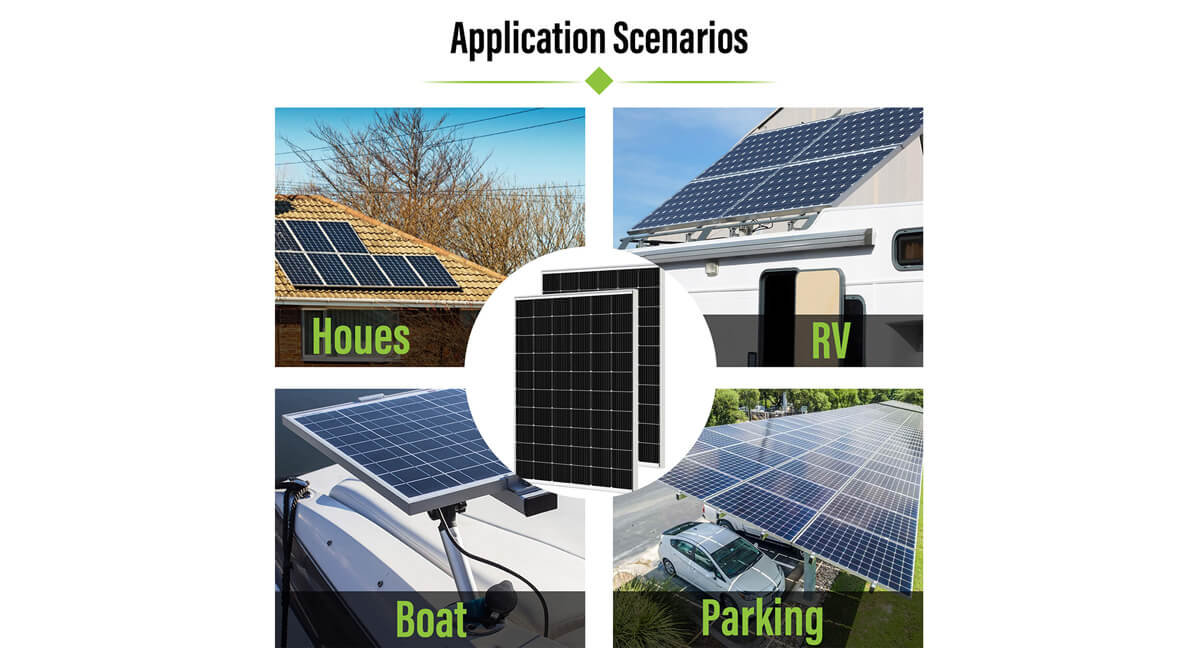
Solar panels, with their ability to convert sunlight into electricity, provide numerous benefits to individuals, communities, and the environment. They contribute to reducing carbon emissions and mitigating climate change by displacing the use of fossil fuels. Additionally, solar energy helps to alleviate the strain on traditional power grids and promotes energy independence by allowing individuals and communities to generate their electricity.
Solar panels offer significant economic advantages. Although the initial installation cost can be high, solar panels have a long lifespan and require minimal maintenance. This translates into long-term cost savings, as solar electricity can offset or even eliminate monthly electricity bills. In some cases, excess energy generated by solar panels can be fed back into the grid, resulting in financial incentives such as net metering or feed-in tariffs.
The solar industry also plays a vital role in job creation and economic growth. The installation, maintenance, and manufacturing of solar panels create employment opportunities across various sectors. As the demand for solar energy continues to rise, the industry is expected to expand further, contributing to economic development and innovation.
Solar panels have the potential to address energy poverty and promote sustainable development. In remote areas with limited access to electricity, solar panels can provide a reliable and clean source of power, improving living conditions, education, and healthcare. Solar energy systems can be deployed quickly and efficiently, making them particularly suitable for emergency relief efforts and off-grid applications.
Solar panels harness the power of the sun and convert it into usable electricity through the photovoltaic effect. These remarkable devices have revolutionized the way we generate and consume energy, offering a renewable, sustainable, and environmentally friendly alternative to conventional power sources. As advancements in technology continue to improve efficiency and reduce costs, solar energy holds immense potential to play a significant role in the global transition towards a clean and sustainable energy future. By embracing solar panels and promoting their widespread adoption, we can contribute to a greener planet, energy independence, and socio-economic progress.











